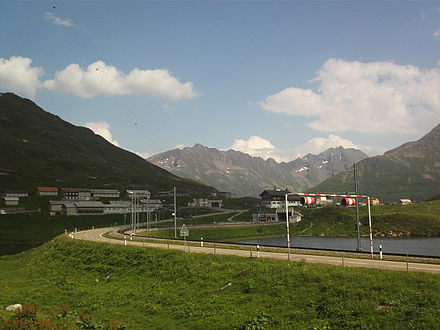Central Europe
Central Europe
Central Europe is one of Europe's most beautiful regions. Long divided by the ambitions of warring empires and then Cold War tensions, this region has been deeply influenced by the Holy Roman Empire, Austria-Hungary, the Ottoman Empire, the Russian Empire, the Polish-Lithuanian Commonwealth and German hegemony throughout history. While the scars of the Cold War are still visible in the eastern parts of this region, it is slowly but surely shedding its erstwhile negative reputation and cannot be called a "forgotten" corner of Europe any more. With the exceptions of tiny Liechtenstein and staunchly neutral Switzerland, the countries in this area are now EU members and participate in the process of European unification, so travelling between them is a breeze. Whereas just over three decades ago, barbed wire and walls and unfriendly border agents would hinder free movement, today frequent rail and bus connections, cheap flights and excellent roads make getting around easier than ever before. But before you plan your "Central Europe in two weeks" trip, do consider the many small towns and beautiful unspoiled nature reserves that would fall by the wayside were you to concentrate on the many top highlights.
Countries

Forget The Sound of Music (few Austrians have ever actually heard of it), this country has much more to offer than breathtaking Alpine panoramas - the cosmopolitan city of Vienna has a unique charm, and Vienna coffee houses were both the start of many a story and the place where many stories have been written. You can of course always ski or hike in the Austrian Alps as well.
This country is much more than the home of Kafka. Fairytale forests and beautiful mountains are a nice addition to the charming cities that survived both wars and communism, and the hearty and filling cuisine is just one more reason to stay.
Both the most populous and the most economically powerful country in the region, Germany is an incredibly diverse nation that offers everything from skiing in the Alps to sunbathing on the coasts, old towns dating back to the Roman Empire and ultramodern architecture in cities like Frankfurt.
A favourite with Easterners during the Cold War, Hungary today is among the often overlooked gems of Central Europe. Don't make that mistake. An open mind and a curious heart will open the beauty of this country to you.
While you might associate Liechtenstein with shady financial deals and strange politics, this tiny alpine principality by the Rhine is well worth a short stop.
This beautiful country has a long and brave history spanning thousands of years. With the beautiful Baltic Sea to the north and the Sudetes and Carpathian Mountains in the south, Poland is a diverse gem.
Often mistaken as simply an appendix of "big brother" Czech Republic, this small ice hockey-crazy nation has made good use of its independence, won in 1993, and now offers a unique blend of German, Hungarian, Czech and Slovak influences that come together in its capital Bratislava as well as the skiing resorts of Europe's smallest high mountain range, the High Tatras.
Much more than just another post-Yugoslav state, this small nation has both the Adriatic sea and the Alps, Romance, Slavic and Germanic influences and a well educated population that speaks enough foreign languages to welcome visitors from all around the globe
With four official languages and strong regional identities in over two dozen cantons, Switzerland is one of the most diverse countries in Europe. It is also rightly famous for chocolate, cheese, watches, banks and neutrality as well as the culture of honest debate and consensus that binds it all together
Cities

There are way more cities of interest in Central Europe than would be convenient to list in one article. Below is a list of nine of the most notable:
- Berlin — divided by force for 45 years during the Cold War, the capital of reunified Germany since 1990, and now an international cultural centre
- Bratislava — Once known as "Pressburg", this city has seen both Austro-German and Hungarian influences and has thankfully survived the world wars largely unscathed
- Budapest — made up of old Buda and Pest on both sides of the Danube, this old Austro-Hungarian co-capital is famous for its thermal baths and was the second city in the world to get a metro
- Geneva — Switzerland's second city is very much a global city with its location close to the French border and the countless international organisations from CERN to the Red Cross headquartered here
- Ljubljana — the picturesque Alpine capital of Slovenia and a charming baroque city with stunning architecture and dynamic nightlife
- Munich — Bavaria's beautiful capital city, its slogan is 'world city with a heart' (Weltstadt mit Herz), the site of the famous Oktoberfest, Hofbräuhaus, many beer gardens and the gateway to the Alps.
- Prague — home of Kafka and castles and one of the centres of power of the medieval Holy Roman Empire, as well as seat of the oldest university north of the Alps, Prague today draws countless young tourists for its affordable and tasty beer
- Vienna — An erstwhile imperial capital famous for its coffee houses, the arts and culture, this city looks at least two sizes too large for the tiny country it sits in
- Warsaw — capital of Poland, and one of the EU's thriving new business centres; the old town, nearly completely destroyed during World War II, has been rebuilt in a style inspired by classicist paintings of Canaletto.
Other destinations
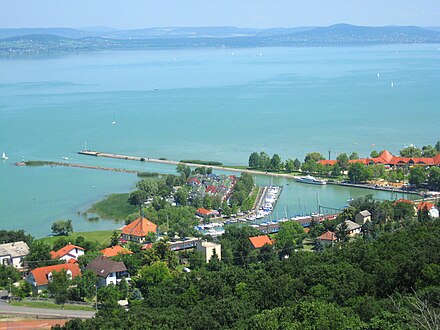
- Alps — probably one of the most important winter destinations in the world, that is home to summer resorts too
- Auschwitz-Birkenau — Nazi death camp that was the centre of the Holocaust for European Jews during World War II
- Białowieża National Park — a UNESCO world heritage site, this is the largest remainder of Europe's primeval forest
- Black Forest — known for cuckoo clocks and cherry cake, this region also offers stunning landscapes
- Bohemian Paradise — unique geographical formations within the oldest protected parkland in the Czech Republic
- Lake Balaton — a large but shallow lake that was a favourite with Easterners during the Cold War
- Neuschwanstein Castle — built by eccentric Bavarian King Ludwig II this castle has been inspiration for Disney
- High Tatras — Europe's smallest high mountain range is slowly being "discovered" as a hiking and skiing destination beyond its immediate vicinity
Understand
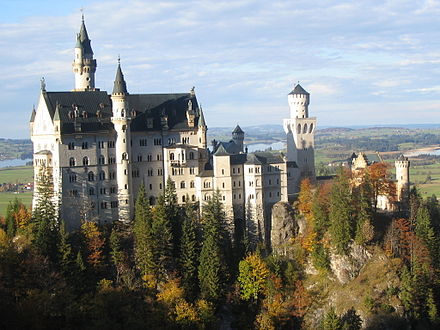
While ethnically different, the countries of Central Europe share a similar culture and history throughout the ages. In the Middle Ages, the region was dominated by the Holy Roman Empire, a patchwork of feudal fiefs, city-states and other smaller entities, until it lost much of its power in the Thirty Years War. The region was dominated by the Polish-Lithuanian Commonwealth, the Austro-Hungarian Empire, and later the German Empire. German was the lingua franca of the region well into the 20th century.
While the ethnic mosaic of the region was not a major source of conflict until the 19th century, nationalism and racism made it an increasingly divisive issue ultimately resulting in the horrors of the Second World War and the Holocaust. During the Cold War the region was divided between east and west by the figurative Iron Curtain, but since the revolutions around 1990, Germany has been reunified, most countries in the region have joined the European Union (except Switzerland and Liechtenstein, which have close ties to the EU), and border controls are absent or casual.
Economic and cultural gaps remain in the region, even between neighbours (while many Polish people are devout Catholics, Czech people are rarely religious), and within countries such as Germany. In general, the west is wealthier and more cosmopolitan than the east; though since gaining EU membership, some cities of the east, such as Warsaw and Ljubljana, have seen tremendous economic growth.
The regions of western Ukraine, Transylvania (Romania), Kaliningrad Oblast (Russia), Alsace and parts of Lorraine (France), and South Tyrol/Alto-Adige province (Italy), not covered by this article, are sometimes also considered Central European. This is due either to their current or past ethnic makeup or previous political histories. The Kaliningrad oblast spent most of its history as a German speaking region and South Tirol remains a largely German-speaking region in northern Italy maintaining strong cultural ties to Austria. Even though Ukraine is predominantly an Orthodox Christian country, its westernmost part for the centuries was part of the Polish-Lithuanian Commonwealth and later passed to Austria-Hungary which to some extent influenced its unique culture.
Central Europe has temperate climate with four seasons. The further inland, the greater are temperature differences between summer and winter. Summers have more daylight than winters, with difference increasing further north: in Hamburg, sun sets at 16:00 in December, and 22:00 (DST) in June.
Talk
Central Europe has much linguistic diversity with a wide spread of the Germanic, Slavic, Uralic and Romance language families.
Germanic languages
 German has the largest number of native speakers in the region and acts as the official language for Germany, Austria and Liechtenstein, and is co-official in Switzerland (alongside French, Italian and Romansh).
German has the largest number of native speakers in the region and acts as the official language for Germany, Austria and Liechtenstein, and is co-official in Switzerland (alongside French, Italian and Romansh).
In Switzerland, Swiss German is the mother tongue of over 60% of the population. However, standard German is taught in school and is used in signage and formal settings. There are small German-speaking minorities to be found in Poland, the Czech Republic and Hungary. Many people throughout the region can also speak German as a second language.
Low German is spoken by rural communities or as a second language by a few in most federal states of northern Germany and still has a significant role to play in the city states of Bremen, Hamburg and Lübeck and in the states of Niedersachsen, Schleswig-Holstein and particular in the eastern federal-state of Mecklenburg-Western Pomerania.
Frisian is closely related to English and Dutch and is spoken by a few thousand people in parts of the German states of Schleswig-Holstein and Niedersachsen and a lot more people in the Dutch province of Friesland.
Slavic Languages
The Czech and Slovak languages are closely related, with the Sorbian language spoken in eastern Germany near the Polish frontier also a close relative.
Polish is the main language of Poland, although the country does host some minority Slavic languages such as Kashubian (in the region) and Silesian in southwest Poland.
Slovenian is the official language of Slovenia, but it is also spoken by the Slovenian minorities in southern Austria, northeastern Italy and western Hungary.
There is also a small Croatian minority in Austria's Burgenland.
While Russian is not endemic to the region, it was taught in schools east of the Iron Curtain.
Hungarian

Romance languages
French or Italian are spoken by the majority of the population in the western and southern regions of Switzerland respectively, while German is commonly taught as a second language. Similarly, German-speaking Swiss often learn French as a second language.
In the Swiss Canton of Graubünden or Grison, Romansh is spoken as a regional language and notable for being very close to Latin. Given that almost all Romansh speakers speak either Swiss German and/or Italian it is unlikely to be encountered.
Other languages
Finding people who speak and understand English is not a problem in most regions of Central Europe, with quite a few people also speaking German and Russian as second languages. Generally speaking, foreign language proficiency is greater the further west and north you go, and in urban areas in general, while people from wealthier regions tend to have better fluency. With the notable exception of Russian and German, which were more commonly taught two or three decades ago, young people will often speak foreign languages better than older people.
Get in
The best entry point to the region depends mostly on your travel plans and itinerary. Prices for flights can vary significantly depending on the airport you fly into and due to the excellent transportation connections you have a wide selection available. Cross border train tickets are sometimes sold by several different railways under varying prices and conditions, so shop around a bit.
By plane
serves destinations in Austria, Slovakia and Hungary](https://upload.wikimedia.org/wikipedia/commons/thumb/7/77/2011-06-14_10-23-56_Austria_Nieder%C3%B6sterreich_Fischamend_Markt.jpg/440px-2011-06-14_10-23-56_Austria_Niederösterreich_Fischamend_Markt.jpg)
See also: Flying in Europe
By far the busiest and best connected airport in the region is Frankfurt Airport in Hesse, Germany, which offers connections to all inhabited continents and to most airports of any importance in Europe. Zürich, Munich and Vienna airports also see their share of intercontinental travel with Vienna in particular having a focus on connections to the Middle East.
Some of the minor airports may also offer a limited number of direct flights to destinations mostly in other parts of Europe, North Africa or the Middle East. Seasonal flights to "sunny" destinations like Antalya or Mallorca are pretty common even at the most minor airports that otherwise only have feeder flights to one or two hubs.
By train
See also: Rail travel in Europe

- InterCityExpress (ICE) trains offer connections across Germany, but are also run in partnership with the Austrian, French and Dutch railways.
- The French TGV connects France with Geneva, Berne, Basel and Zurich. Also there are connections to Karlsruhe, Stuttgart, Munich and Frankfurt.
- Thalys trains connect Cologne with Brussels and Paris
- RailJet connects Vienna with Zürich, Munich and Budapest. The Czech Republic has also acquired some Railjet-trains to connect Prague to the rest of Europe, mostly Austria.
- Pendolinos are run in Slovenia and the Czech Republic with connections to neighboring countries.
In addition, there are numerous night- and other express and regular trains that connect Central Europe with the rest of continental Europe, and travel as far as Istanbul or Moscow. Check the homepage of the Deutsche Bahn, which has an excellent overview of the European rail system.
The long and slow decline of the Central European sleeper train seems to have been stopped for now with ÖBB operating the lion's share of them under the Nightjet brand. There are also some night trains run by other railways, mostly east of the former Iron Curtain.
By car
The days of long lines at the border are thankfully largely over due to increasing European integration. That said, even 25 years after the end of the Cold War there are still bottlenecks for traffic across the former Iron Curtain.
By bus
See also: Intercity buses in Europe
Buses used to be a niche market if that, mostly catering to immigrants from the Balkans and their descendants. However, since a liberalisation of the market in Germany (and subsequently in France), more and more bus companies offer domestic and international routes throughout and in and out of Central Europe. As a rule of thumb, short hops can be incredibly cheap with prices like €5 not unheard of, but the longer the distance and the later you book, the more expensive it gets. While routes like London-Cologne are offered, they don't necessarily offer much of a saving compared to a flight or train.
Get around
Central Europe is a member of the Schengen Agreement.
- There are normally no border controls between countries that have signed and implemented the treaty. This includes most of the European Union and a few other countries.
- There are usually identity checks before boarding international flights or boats. Sometimes there are temporary border controls at land borders.
- A visa granted for any Schengen member is valid in all other countries that have signed and implemented the treaty.
- Please see Travelling around the Schengen Area for more information on how the scheme works, which countries are members and what the requirements are for your nationality.
By car
See also: Driving in Europe
Roads are generally in good to excellent condition and the Czech Republic and Poland in particular have been investing a lot in road construction to deal with the pent up demand since 1990 when cars became much more common. That said, there are some issues with congestion, particularly in large cities. Crossing borders with your own car should be no problem whatsoever, but rental car contracts sometimes have limitations, especially for German or Austrian cars to be taken east - those usually don't apply the other way round, so read the fine print carefully before committing to anything. If you plan to visit large cities, you should try working around having a car on the days you'll be there or forego one entirely as cars are more of a headache than a useful tool in cities of roughly 500 000 or more inhabitants.
By train
The Czech Republic, Switzerland and Germany are among a handful of countries variously listed as having the densest railway network in km of routes per square km of area and as such most communities of any size and even many natural attractions are easily reachable by train. Poland neglected its railway during the later communist era, but has started investing in rail transport again. It's still a good option to reach big cities in Poland with reasonable comfort and speed. Train tickets in Germany and Switzerland can be expensive, but there are discount cards and early bird offers that can be used to reduce the damage. The sleeper train network has suffered a lot, but thankfully Austrian Railways (ÖBB) has picked up the baton from DB and now runs Nightjet, a reasonably modern and comfortable Night Train through the region. Booking in advance can net you real bargains, but popular routes and times or last minute booking might mean you'll pay significant amounts of money.
By bus
See also: Intercity buses in Germany
The bus did not play a major role in intercity transportation in this area until 2012 when Germany opened its domestic market. Poland and the Czech Republic had fairly deregulated markets prior to that, but with few exceptions those companies never made a major foray into Germany even after the market was opened. Major players include Flixbus and Student Agency.
By plane
Domestic flights are mostly aimed at business travellers and due to the excellent railway network, they can be sparse or non-existent on some routes. In general they are hardly good value in terms of money and not always a major time-saver either. That said, bargains can still be had on some routes and for larger distances, flying might save you a day in transit.
See
- The English Garden and the huge Deutsches Museum in Munich
- The massive Dom in Cologne
- The modern architecture of Berlin's Potsdamer Platz
- The modern skyline of Frankfurt and Warsaw
- The natural skyline of the Alps in Innsbruck
- The natural beauty of Lake Constance and its three national shorelines
Itineraries
- the Elbe Radweg follows the eponymous river for most of its course from the Czech Republic to the North Sea near Cuxhaven - popular with expert and novice bikers alike as the route is mostly flat and well maintained.
Do


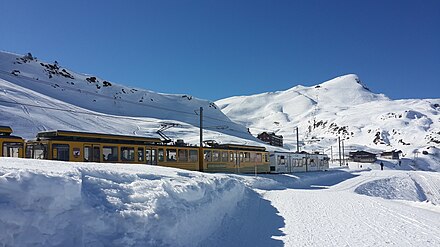
- Ascend the Reichstag Dome in the Berlin district of Mitte
- Hike the mountainous areas of "Saxon and Bohemian Switzerland" south of Dresden along the Elbe/Labe
- Walk around historic Rothenburg ob der Tauber complete with city walls
- Visit a beer hall, the Olympic Park, BMW museum and don't forget the colorful central pedestrian zone in Munich
- Visit Hitler's infamous Eagle's Nest in Berchtesgaden in the Bavarian Alps with a good museum on the Nazi Crimes
- Tour the Black Forest and maybe buy a cuckoo clock or just eat a torte!
- Cruise the river Rhine and enjoy the world-famous wine
- Ride the post-modern monorail in Wuppertal
- Stroll through the old town centre of Salzburg and visit the imposing fortress of the Archbishop
- Float down the river with the locals in the Swiss capital of Berne
- Ride a cable car up to Gimmelwald, eat at the Piz Gloria restaurant, go out on the Jungfrau glacier, see a churning waterfall, or hike one of the countless Swiss mountain ridges
- Stroll through historic Vienna and visit the Prater district
- Go skiing or snowboarding in Switzerland, Austria or Bavaria
- Go up Castle Hill and admire the view of the river and city in Budapest
- Relax in a Hungarian Turkish style spa
- Visit the world's largest castle complex and tour the old and new towns of Prague
- Visit the historic and elegant port city of Gdansk and it surrounding Baltic resorts
- Spend a night camping under the stars and moonlight on the German Baltic island of Rügen
- Stroll Warsaw's old town and old Jewish Ghetto, and take a glance at the Soviet inspired Palace of Culture and Science
- Tour the historic old town and castle of Kraków, and visit the Soviet worker's suburb of Nowa Huta
- Holocaust remembrance: Be moved by a visit to a Nazi concentration camp and memorial such as Auschwitz, Bergen-Belsen, Dachau or Treblinka
- Tour the Old Town of Dresden and see the reconstructed "Frauenkirche" a symbol of peace and reconciliation
- Visit the historic spa town of Karlovy Vary (Carlsbad) in Bohemia in the Czech Republic and "take the cure"
- Experience the wild nightlife in Berlin, Prague, Munich and Budapest until the wee hours of the morning if you can!
- Visit Nuremberg for a castle, a charming medieval old town, one of the best known Christmas Markets in the world or the chilling history of the Nazi rallies at Dokumentationszentrum Reichsparteitagsgelände - the former Nazi party rallying grounds, now a superb museum
Events
- Jazz fans will enjoy two big jazz festivals in Poland:
- Germany:
Eat
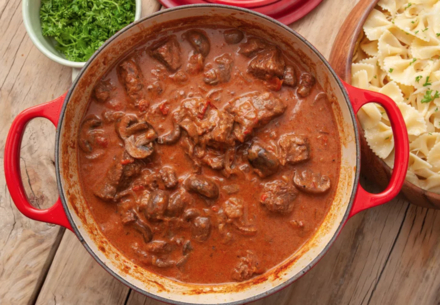 While Central Europe spans different nationalities and climates, some culinary traditions can be found all across the region. Overall, Central European cuisines tend to be simple and hearty, with an emphasis on meat and starch, a diet which helped people survive the harsh winters in the olden days. Poland, Germany and Austria are rightly famous for their various types of sausages, and it would take a generous academic grant and a lot of time to sample them all. In the Alps, the cuisine has taken a lot of inspiration from high mountain cattle farming and is thus heavy in savory cheese or durable dry ingredients like muesli (or müsli outside of Switzerland). The haute cuisine of France and staples of Italian food have made a big impact on Central European cuisine as have the culinary traditions of immigrants from Turkey, the Balkans or (South) East Asia, and restaurants serving such cuisines exist at varying price, quality and authenticity in almost all major cities in the region.
While Central Europe spans different nationalities and climates, some culinary traditions can be found all across the region. Overall, Central European cuisines tend to be simple and hearty, with an emphasis on meat and starch, a diet which helped people survive the harsh winters in the olden days. Poland, Germany and Austria are rightly famous for their various types of sausages, and it would take a generous academic grant and a lot of time to sample them all. In the Alps, the cuisine has taken a lot of inspiration from high mountain cattle farming and is thus heavy in savory cheese or durable dry ingredients like muesli (or müsli outside of Switzerland). The haute cuisine of France and staples of Italian food have made a big impact on Central European cuisine as have the culinary traditions of immigrants from Turkey, the Balkans or (South) East Asia, and restaurants serving such cuisines exist at varying price, quality and authenticity in almost all major cities in the region.
The North European Plain has a temperate climate, allowing for rich grain harvests and dairy farming. Fruits and vegetables have traditionally been fewer than south of the Alps, and have traditionally been dried or pickled for preservation. The Polish–Lithuanian Commonwealth dominated the region during the early modern era and was over time displaced by the Austro-Hungarian Empire. The Austrians developed a haute cuisine inspired by France and Italy. While the potato was introduced in the 17th century for its flowers, it took some centuries to become the most important staple crop.
Ashkenazi Jews used to be a significant minority in Central Europe. Most of them emigrated to the Americas and Israel in the 19th or 20th century, or perished in the Holocaust. Dishes such as bagels and gefilte fish originate from Central Europe.
The region was divided during the Cold War. While the west got an influx of imported food and foreign cuisines, the eastern countries depended on domestic ingredients, many of which were rationed. The abundance of tropical fruits such as bananas in West Germany, compared to the scarcity in the East, was one of the most visible differences between the countries.
With the fall of the Iron Curtain and the expansion of the European Union, most of the world's foodstuffs are available across the region.
-
German cuisine has local varieties such as Bavarian and Franconian cuisine. Germany might be among the most cosmopolitan countries in Central Europe, with a high presence of foreign cuisines, particularly Turkish and Italian.
-
Switzerland combines German, French and Italian flavours. It is famous for its cheese, with fondue as its national dish.
-
Austria is known for high-end cuisine from the Austro-Hungarian Empire with great pastries and confections such as the Sachertorte.
-
Liechtenstein has a cuisine similar to Switzerland and Austria.
-
Poland is famous for its kluski (unfilled boiled dumplings) and pierogi (fried filled dumplings).
-
The Czech Republic stands out for sweetened main courses. It is the world leader in beer consumption per capita, as the home of Pilsner beer from Plzen beer and famous lagers including Budvar from České Budějovice.
-
Slovakia has a cuisine typical of the region with halušky, a potato dumpling, as an iconic dish, and sheep milk products.
-
Hungary has the spiciest food in the region, with paprika as an omnipresent seasoning. Its Austro-Hungarian heritage is evident in its coffeehouses and rich pastries.
-
Slovenia is the crossroads of the three major European cultures, with flavours of Austria, the Balkans and Italy.
Dishes
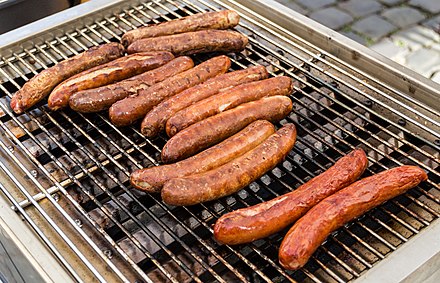 Most meals are based on meat, with pork being most common. There is a rising vegetarian/vegan community, especially in the western and more cosmopolitan cities. Lamb, mutton and game are common in mountain regions. Sausages are common across Central Europe. Schnitzel is a meat dish with varieties around the region.
Most meals are based on meat, with pork being most common. There is a rising vegetarian/vegan community, especially in the western and more cosmopolitan cities. Lamb, mutton and game are common in mountain regions. Sausages are common across Central Europe. Schnitzel is a meat dish with varieties around the region.
Dairy products such as cheese are common, made from cow, sheep and goat milk.
Seafood is common in the coastal waters of Germany and Poland, with freshwater fish appearing inland.
Bread of different cereals is a staple in Central Europe, and served as part of most meals.
Pastries and cakes such as the Strudel are common.
Potatoes are the most common staple beside bread; they are boiled, fried, mashed or used as potato flour.
Dumplings are based on flour or potatoes, filled or unfilled, boiled or fried.
Fruits and vegetables are traditionally fewer and more savoury than in southern Europe. They are usually pickled, and occasionally fermented, such as in sauerkraut. Hungary makes great cucumber salad (uborkasaláta).
Drink
.jpg/440px-Vagues_humaines_(8274661671).jpg)
While wine is made in Germany, Austria, the Czech Republic and Slovakia, Hungary is the region's best known wine country. Tokaji is a famous wine region in Hungary and Slovakia, known for sweet wines.
- Beer – The golden beer drunk throughout the world was developed in this region, and arguably it is here that it is still at its best. The Czech Republic has a grand brewing heritage and Pilsen is the place were the technique was pioneered, creating the Pilsner style that is reproduced around the world. The low cost of beer in the Czech Republic makes it easy to get a taste of many of the fabulous beers, from the well-known Pilsner Urquell, Budvar (Budweiser) and Staropramen, to local favourites such as Kozel, Bernard and Gambrinus. Many have a few different varieties and a Cerny Pivo (Black Beer) these can be as good if not better than the standard beer. Slovakia has many beers of high quality with Zlaty Bazant being highly regarded. Hungary, Poland, and Slovenia all have very good national examples sometimes on a par with those from the Czech lands. Germany, Austria and Switzerland have a similar brewing heritage, but can throw in several different types of beer. Weissbier, (Wheat Beer) is a refreshing style popular in summer but drunk year round. There are a huge amount of varieties and local specialties are nearly always worth seeking out. Generally, the further north one travels in Germany, the more bitter or hoppy the beer becomes adding to the north-south cultural divide. Bavaria, "the Holy Grail of Brewing", located in southern Germany, has over 600 breweries alone and even more accompanying beers to sample!
- Wine – The region produces a wide range of wines from superb world famous regions, down to inexpensive local plonk. Possibly the finest region in the area is the Tokaj-Hegyalja region shared between Hungary and Slovakia that is world-renowned for its sweet dessert wines as well as more standard whites. Germany has several wine regions; the Rhine and Moselle Valleys are well known for their fragrant white wines. Saxony in the east is home to a small wine-growing region on the riverbanks of the Elbe. Austria and Switzerland also produce some very high quality products. In the other countries like Slovenia, Slovakia, and the Czech Republic, local wines can throw up some very good varieties and it is always worth investigating local produce.
- Each country has a range of distilled beverages. Plain and seasoned vodka is popular in the Slavic countries. Pálinka, brandy often made from apricots, and slivovitz, a plum liquor or liqueur, are also popular. The quality of Polish vodka is among the best in the world. The high quality product can be very different to the industrial stuff you may buy in your local shop and is well worth a try. Zubrowka is a variety of vodka flavored with a cinnamon-like grass and is delicious when combined with apple juice. Some claim it to be so good it produces no hangover, but you might not want to test that.
Stay safe
The western part of this region is probably one of the safest in the world with violent crime being rare in Germany, Poland, Austria, Switzerland and Liechtenstein. While the situation in some parts of countries that used to be east of the iron curtain is by no means bad, certain neighbourhood in the bigger cities do have the typical big-city issues and also some crime arising from it. Unfortunately racism is an issue to varying degrees in all of these countries. Antiziganism (hatred towards and discrimination against Sinti and Roma "gypsies") is particularly common in parts of the area with large Sinti and Roma populations but can be found in most of Central Europe to saddening degrees. Political rallies by extremist groups can get violent, as can bigger left-wing counter-demonstrations.
Respect
Despite the tendency by many around the world to refer to all countries formerly behind the Iron Curtain as "Eastern Europe", inhabitants of Central Europe will be flattered and pleased if you describe their countries as "Central European" both geographically and culturally. Remember that Austrians, Liechtensteiners and most Swiss and Luxembourgers speak German but are not German! Czech, Polish or Slovakian may sound similar to Russian, but inhabitants of these countries will not take kindly to assumptions of cultural overlap. Lastly, keep in mind that the Czech Republic and Slovakia once shared a country as well and Slovaks in general are very proud of their new found independence, which will show especially if there is an opportunity to beat the Czech at soccer or ice hockey.
Performing a Nazi salute is a criminal offence in Germany, Austria, Poland, the Czech Republic and Slovakia. The penalty for doing so in these countries is typically a fine; however, in Germany and Austria, any person caught performing a Nazi salute can not only be fined, but imprisoned too. In Switzerland, use of the salute is not a criminal offence in itself, but doing so for the purpose of actively promoting Nazi ideology is considered to constitute hate speech. Displaying the Swastika is also a criminal offence, though in Germany, exceptions are made for religious Swastikas.
